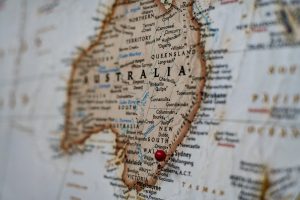After months of watching bushfires rage across Australia, it is easy to feel desperate. As well as the human cost, the short and long-term effects on ecosystems will be profound, and we have all been affected by reports on the extent of Australia’s wildlife loss.
Although wildfires happen every year, the ferocity and range of what has been experienced particularly in Victoria, South Australia and New South Wales feels very different. In many people’s minds this crisis has come to embody broader changes in climate that are taking place across the world. This has led to an increased focus on what climate change is starting to mean in practice, both now and for the future. The science tells us that it will mean more extreme weather: droughts and fires, floods and unprecedented storms.
As Christopher Ryan pointed out in his article last week, countries like Australia are beginning to look for answers beyond national governments: notably to local and state governments, where climate action has been taking place for some time. It is here that innovative low-carbon policies are being implemented and real progress is being made.
Many Australian states and territories are members of the Under2 Coalition: a global community of state and regional governments committed to ambitious climate action. The Coalition is made up of more than 220 governments, which represent 43 percent of the global economy. States and regions that have signed up have committed to keeping global temperature rises to well below 2 degrees Celcius with many striving to reach 1.5 C. Australian members include Victoria, Queensland, the Australian Capital Territory (ACT) and South Australia, with the Northern Territory joining soon. Each of these states and territories has set net-zero carbon emission targets that they are now tracking progress against.
Victoria has been developing a “circular economy” for some time. This means finding new ways to remove waste from consumption by transitioning to renewable energy, keeping products in use for as long as possible and dramatically reducing waste and pollution. More than 500 Victorians gave their thoughts and ideas on state plans, showing the level of interest that now exists around the environment.
Last year, South Australia also announced its policies on investing in smarter carbon reduction measures such as increasing green canopy cover, supporting electric vehicles and developing climate resistant agriculture. These measures are designed to help not only with climate resilience and the threat of more extreme weather, but to bolster the local economy and create more livable neighborhoods for local people. There are opportunities for growth presented by low-carbon economies, and particularly for local businesses exporting renewable energy solutions, as demand grows for more sustainability worldwide.
Between 1990 and 2017, South Australia’s net greenhouse gas emissions were reduced by 39 percent while Gross State Product increased by 76 percent: showing that economic growth does not have to depend on polluting technologies. In fact, South Australia is already generating over half of its energy via renewable sources. Looking more globally, the Climate Group and CDP’s Global States and Regions Annual Disclosure 2019 found that 75 states and regions are now powering their economies with 45 percent renewable electricity. By comparison, only 25 percent of global electricity is renewable.
State and regional governments are increasingly stepping up their climate commitments where national governments are unable or unwilling to do so. Through their actions they are showing that wholesale policy shifts in key areas of the economy are not just desirable, but possible. They can do this because they have practical control over sectors such as transport, waste, land use and energy, but also because they are closer to citizens than national government could ever be and therefore can be more agile, practical and responsive in implementing climate measures.
Regional and sub-regional partnerships will be critical in finding the solutions we need to halt the worst effects of climate change and making practical improvements on the ground. The good news is that these partnerships already exist in many parts of the world, including Australia, and that states and regions can help us to realize many of the goals we need to reach for a low-carbon future.
As the climate emergency deepens the need to reduce global emissions and decarbonize is more urgent than ever before. The science tells us that global emissions must be cut in half by 2030 if we do not want to see catastrophic and irreversible damage to our air, oceans and wider ecosystems. 2020 is therefore the start of an important decade: a decade where we need to move from negotiation to implementation and where collective ambition must be raised and drastic action taken. That is why we believe that the 2020s should be known as the Climate Decade to highlight the importance and necessity of quick, decisive action – and states and regions can lead the way.
Tim Ash Vie is Director of the Under2 Coalition Secretariat at international non-profit The Climate Group.
































